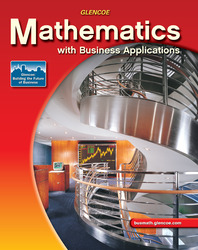
Mathematics with Business ApplicationsChapter 20:Business Math in ActionGrazi, Italy, for the Double-Entry SystemIt’s hard to keep track of your belongings if you can’t write and have only the most basic understanding of arithmetic. But human beings have always had a powerful desire to account for their possessions, even if it meant marking dots on pebbles, like they did in 4,000 B.C. Five thousand years later, Londoners were still using tally sticks for the same purpose. Why did it take so long for accounting to develop? Because Europeans used the Roman numeral system, which has no zeros. Without the place-holding zero, doing anything more than the simplest addition and subtraction was too complicated. Accounting finally took a leap forward in 1202, after an Italian named Leonardo Pisano traveled to northern Africa and learned about Arabic numerals, the system we use today. He introduced it to Europe, and over the next 200 years Italians developed better ways of keeping records. They began listing debits and receipts in different ledgers, and eventually listed them on the left and right sides of a single page. At last, double-entry accounting had arrived. In 1494, Luca Pacioli formalized the double-entry system in his Summa, a book that summarized all known knowledge of mathematics in the West. The printing press had recently been invented, and the section of the Summa that explained double-entry accounting was reprinted and quickly became a bestseller. For the next 500 years-up to this day-that system has been the basis of business accounting. Why did the double-entry system develop in Renaissance Italy as opposed to the advanced cultures of Ancient Greece and Rome? Accounting scholar A.C. Littleton believes it was a matter of all the right elements coming together at the same time:
|  |















